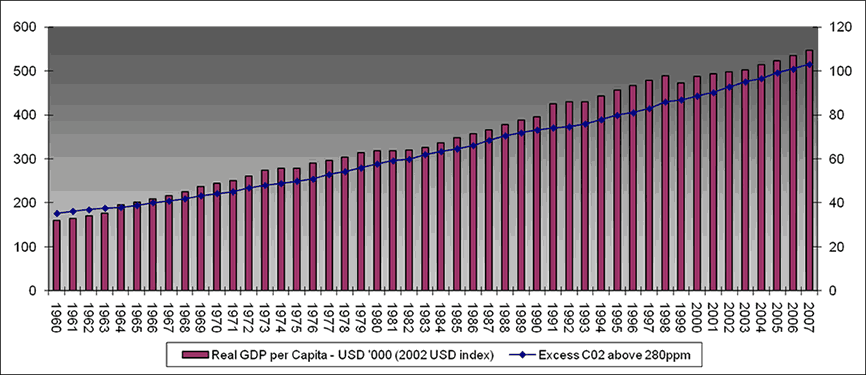
The survival of Human Beings
Without change, the survival of Human Beings is unsustainable…
Human Beings (and other animal life) breath oxygen to survive and emit carbon-dioxide (Co2) in the life process. Plant life ‘breathes’ Co2 and emits oxygen, hence the need for equilibrium and symbiosis within the Earth’s ecosystem.
The level of Co2 is usually measured as parts per million (ppm) within the Earth’s atmosphere and oceans. The pre-industrial level of Co2 in both the atmosphere and the oceans was approximately 280 ppm.
If the level of carbon-dioxide is too high, animal life cannot survive on Earth
The sustainable (equilibrium) level of carbon-dioxide (Co2) for animal life on Earth is a maximum of 350 ppm. As of October 2010 it was around 390 ppm (almost 40% above the pre-industrial level of 280ppm).
As of May 2021, it had increased (in just over 10 years) to 418 ppm, or by 7%.
Both measurements were taken from Mauna Loa, Hawaii.
Each increase in the ppm also raises average global temperatures through the greenhouse gas effects of Co2.
If the level of Co2 reaches 450 ppm (or even lower at 430 ppm*) animal life becomes unsustainable, and there is no turning back.
The detailed causes for this potential extinction event are given in The Book Of Outcomes.
However, some will say the climate is the same as the weather. This is nonsense. Weather is daily.
Climate means inclination (literally), which is typically a rolling trend over 30 years.
For weather to equate to climate would mean monitoring daily trends for up to 30 years or more.
The excess of Co2 correlates to economic growth
The correlation between economic growth and Co2 levels is shown by comparing the Gross Domestic Product (GDP) of the major industrialized nations with the growth in Co2 levels** between the years of 1960 and 2007. The correlation coefficient for this data is 0.99 (almost 100%), indicating an almost perfect correlation between the two.
The graph is as follows:

The ‘normal’ or average annual rate of economic growth is 2.4% of GDP. In ‘boom’ years it can be much higher. If the world economy was allowed to ‘grow’ even at the normalised rate of 2.4%, 450 ppm would be reached in 30 years.
If, as suggested by many world leaders and economists, the solution to humanity’s problems is increased economic growth (and the associated economic philosophy of consumer spending), the impending destruction of animal life may be less than 30 years.
Co2 also concentrates above colder oceans and regions, meaning that the initial impact of economic growth will be an accelerated melting of ice caps In the Arctic and Antarctic regions.
The result would be a significant rise in global sea levels, before the point of no return, including the destruction of Human civilisation.
A new economic and financial model is needed: closed-loop, sustainable and zero growth, with moral socio-economic values, based on new global and financial economics.
‘Economic growth’ is an oxymoron: you cannot possibly ‘grow’ scarce resources!
Value is created by making use of the world’s abundant resources by elimination of inefficiencies, and collaboration of Human know-how.
Making money is, and should be, a by-product of doing something good, something of value.
The shared global values of collaboration, constructiveness and benevolence are therefore essential to survival, spiritually, socially and economically.
The Books of The One explain why.
The Story of Stuff also helps explain why we must change the model.
Note: Some might assert that there is insufficient institutional money available for research into this critical issue, but just 1% of NASA's budget would suffice.
* Approximately 450 minus the square root of 450 for potential statistical error ** Trends in Atmospheric Co2